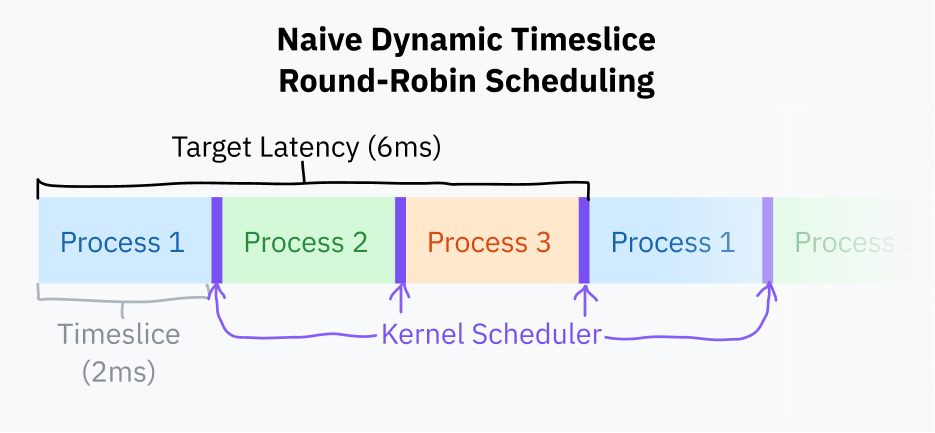Abstract
- Also known as Quantums
- The period of time for which a Process (进程) is allowed to run in a Preemptive Scheduling system
Minimum Granularity
- Context Switch is An expensive operation
- So we have a Minimum Granularity, a lower bound to the Timeslice, guaranteeing a minimum amount of CPU time for each process. In Linux Kernel, it is 0.75ms
- This minimises context switching overhead and improving overall system efficiency
Target Latency
- The desired maximum amount of time that a Process (进程) should wait before being given a chance to run again. So the process doesn’t seem laggy on the user side
- In Linux Kernel, it is 6ms
- Target Latency is exceeded when there is enough Process (进程) for Minimum Granularity to take effect - Process will seem laggy on user side, so rebooting to clear some Process will make computer seems faster
2 Types of Scheduling
Fixed Timeslice Round-Robin Scheduling
- Give every Process (进程) the same Timeslice, perhaps10 ms, and cycle through tasks in order
Laggy Situation
When there is a lot of Process (进程), and each of them gets a fixed Timeslice, the one cycle of all Process will take a significant amount of time
Dynamic Timeslice Round-Robin Scheduling
- Timeslice = Target Latency / total Process (进程)

- Used in modern Process Scheduler
Helps to make each Process be more responsive
Ensures each Process will get to run again before it seems laggy to the user. As long Minimum Granularity is ensured and Target Latency is not exceeded
Process gets to run faster when there is less Process
The Timeslice is a ratio of Target Latency and total Process. Less process means more time for each process
